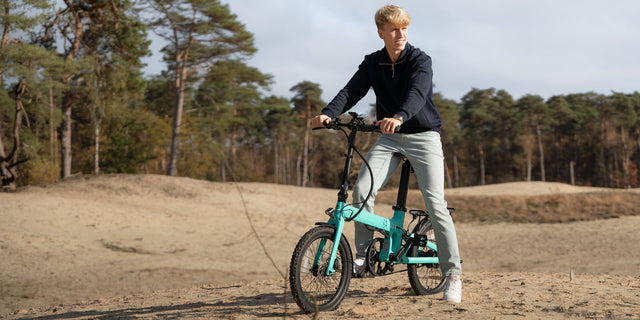Riding further on the same battery charge is mostly about smooth habits and a well‑set‑up bike. This guide gives you quick wins you can do today, plus a simple plan for riding technique, setup and battery care that adds meaningful kilometres without buying new hardware.
See the fundamentals first: E‑Bike Range Explained, then use the calculator to model your route and variables: Range Calculator.
Quick wins (do these today)
- Start in a lower PAS and upshift sooner; keep a steady cadence rather than surging. Erratic pedalling makes the motor engage more frequently.
- Add 5–10 psi to tyres within the safe printed range (check your tyres) for smoother surfaces; drop slightly on rough lanes.
- Remove heavy, non‑essential items from bags and racks; plan water/food stops along your route.
- Lube the chain (or clean the belt drive) and check brakes don’t rub to reduce rolling resistance. The bike should move easily and freely when pushed.
Ride strategy: smooth, steady, efficient
-
Cadence and PAS
- Choose the lowest PAS that keeps you comfortable on the flat. Avoid changing speed quickly in high PAS, as this makes the motor engage more often.
- On hills, increase PAS one step and shift gears to keep a natural cadence. Plan shifts early to avoid high force on the pedals.
-
Momentum management
- Look ahead. Ease off earlier before stops; roll and freewheel with less braking where safe to do so.
- Stand‑up efforts are fine for short stints; return to seated, steady‑cadence pedalling as soon as possible.
-
Starts and stops
- Select a lower gear before stopping. Start in PAS 1–2, then step up once you’re moving.
Setup and maintenance that save watts
-
Tyres
- Pressure in the middle of the printed range suits mixed UK surfaces. Higher pressure rolls faster on smooth tarmac; lower improves comfort and grip on rough lanes. Set pressures for your planned route. If you’re unsure, carrying a compact pump is advisable.
- Choose terrain‑specific tyres. Fit a tyre that balances speed and comfort based on your common riding routes.
-
Drivetrain
- Chains: keep clean and lightly lubed; replace when stretched to reduce drag.
- Belts: wipe with water; inspect tension and alignment per model guidance.
-
Brakes and alignment
- Spin wheels to ensure no pad rub; re‑centre calipers if needed.
- Check that mudguards and racks don’t touch tyres or spokes.
Battery care: keep capacity healthy
-
Charging habits
- Regular use: charge lithium batteries between roughly 20% and 80–90% when convenient. Full charges are fine before big rides.
- Avoid leaving lithium batteries at 0% for long periods; store around 40–60% if unused for weeks.
-
Temperature
- Cold reduces range. Keep the battery indoors before winter rides and expect some loss of range.
-
Storage and transport
- Dry, cool storage is best. Use only the supplied charger and keep contacts clean and dry.
Weather, terrain and packing
- Headwinds and hills increase consumption; plan a capacity margin or a mid‑ride top‑up stop if riding longer distances.
- Wet and gritty roads add rolling resistance; keep tyres clean and properly inflated to suit the route conditions.
- Pack light; Move dense items low and central in panniers or a rack bag for stability. A lower centre of gravity feels more stable.
When to change settings vs hardware
- Try pressure, PAS and cadence changes first. If the range is still short for your routes:
- Consider a second charger at work or your destination for partial top‑ups.
- Where compatible, a backup battery can add extra range.
- Review tyre choice/width for your surfaces.
FAQs
Do the bikes have a built‑in battery monitor?
It depends on your exact model, but almost all modern e‑bikes have a display that shows battery level and other useful information to make your ride easier.
How much do tyres affect range?
The correct tyre pressure and a suitable casing/tread can save a noticeable amount of charge. For smooth roads, a supple road tyre at appropriate pressure rolls fastest; for rough lanes, a slightly wider tyre at moderate pressure reduces losses from vibration and is more comfortable.
Next steps
Model your regular routes with the Range Calculator, then make one or two changes at a time (tyre pressure, PAS, cadence) and re‑check. If you would like to discuss the battery capacity or T-bike models and your planned routes, contact us to discuss your needs.
More stories


